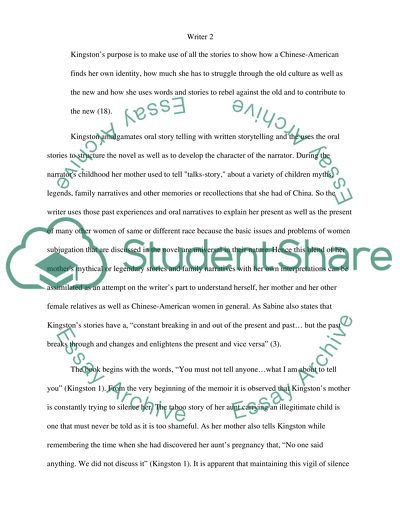Cite this document
(“Maxine Hong Kingston The Woman Warrior- How she used talk-stories as a Research Paper”, n.d.)
Maxine Hong Kingston The Woman Warrior- How she used talk-stories as a Research Paper. Retrieved from https://studentshare.org/literature/1460591-maxine-hong-kingston-the-woman-warrior-how-she
Maxine Hong Kingston The Woman Warrior- How she used talk-stories as a Research Paper. Retrieved from https://studentshare.org/literature/1460591-maxine-hong-kingston-the-woman-warrior-how-she
(Maxine Hong Kingston The Woman Warrior- How She Used Talk-Stories As a Research Paper)
Maxine Hong Kingston The Woman Warrior- How She Used Talk-Stories As a Research Paper. https://studentshare.org/literature/1460591-maxine-hong-kingston-the-woman-warrior-how-she.
Maxine Hong Kingston The Woman Warrior- How She Used Talk-Stories As a Research Paper. https://studentshare.org/literature/1460591-maxine-hong-kingston-the-woman-warrior-how-she.
“Maxine Hong Kingston The Woman Warrior- How She Used Talk-Stories As a Research Paper”, n.d. https://studentshare.org/literature/1460591-maxine-hong-kingston-the-woman-warrior-how-she.


